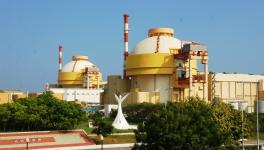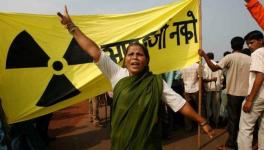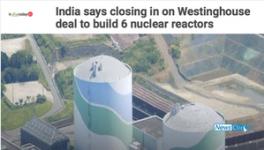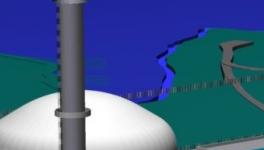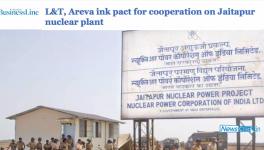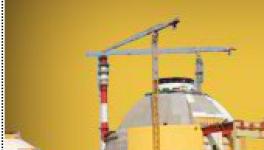Serious Safety Audit of India's Nuclear Program or a Cosmetic Exercise?
The Prime Minister has promised a full safety audit of the existing reactors. However, if we look at what the senior figures within the nuclear establishment have to say, they have already prejudged the issue. They, according to news reports, have met the PM and have assured him everything is hunky dory with India's nuclear energy program. The safety audit's results are already prejudged – the Atomic Energy Commission has learnt nothing from Fukushima.
This brings us to the central question here. The issue is not that a safety audit should be done, but who does this safety audit. We have an Atomic Energy Regulatory Board (AERB) that draws its personnel from Atomic Energy Commission, report to the Atomic Energy Commission and is even located in the Anushakti Bhavan, the headquarters of the Atomic Energy Commission. Therefore the AERB has very little option but to agree with the Atomic Energy Commission’s preconceived conclusions.
In no country with a large nuclear energy program, is the nuclear regulator a part of the body it is supposed to regulate. A former Chairman of AERB (Mail Today, March 15, 2011, Nuclear Regulation in Shambles, Dr. A.Gopalakrishnan) has stated that AERB has no serious disaster management oversight and does not have the ability to address serious design and safety issues. If India is indeed serious about a nuclear energy program, it needs to create a proper safety organisation instead of the current AERB, which has become a virtual rubber stamp for Atomic Energy Commission. A safety audit without an independent regulatory body is of little value.
This is no way to run a critical safety regulatory function. It is also contrary to international practice as well as the treaties that India has signed on the need to separate regulatory and operational functions in nuclear energy. This remains the single biggest obstacle for a safe nuclear energy program in the country.
It is not the best kept secret in the world that Indian plants have had problems at different points. The collapse of the Kaiga dome and the fire in Narora which caused all controls to be lost are cases in point. In Narora, again workers, facing very heavy odds, managed a safe shut-down of the reactor manually. The point is with complete opacity surrounding the nuclear plants and the functioning of the Atomic Energy Commission and its attached body, the AERB, it is difficult to accept the results of the safety audit.
Interestingly, one of the points that the country's nuclear establishment has made repeatedly, is that Pressurised Heavy Water Reactors (PHWRs) -- that are the bulk of the Indian reactors -- are much more safe than the Light Water Reactors (LWR's ). If this is indeed true, why the fascination for the LWRs that, according to the nuclear establishment, are less safe? Why then leave the tried and tested route of PHWRs for which we have indigenous capacity, for imported reactors which by their own admission are less safe?
It is in this context we have to look at the controversial Jaitapur project. The Government is keen to put 6 units of 1650 MW EPR reactors of Areva, France make. Though Atomic Energy Commission chairman, Srikumar Bannerjee claims that this design is tested, as it has worthy predecessors, the fact remains that there is not one plant of this design that has yet been commissioned. That a Fukushima type of accident of earthquake-cum-tsunami will not affect Jaitapur is no consolation as no two serious nuclear accidents have ever been alike. Question of how safe this plant is cannot be answered by saying a Fukushima type accident will not occur here.
Jaitapur plant proposes to have 5% enriched uranium as fuel against the normal enrichment of 3.5% for LWRs and natural uranium for PHWR's. It also has a higher burn rate than the current LWRs. Dr. Gopalkrishnan, former Chairman, AERB has asked in his article, (DNA, February 9, 2011, Jaitapur Deficit of Public Trust) “How much understanding, based on relevant data, do Areva and NPCIL together have on the radiological and physical behavior of high-‘burn up’ spent-fuel from these EPRs and the consequent serious safety issues related to its long-term storage, cooling, transport and reprocessing?” These questions are not going to be answered based on the belief of a few scientists.
It is interesting also to note that Areva, while claiming its technology is completely safe, has also been very unhappy with the prospect of liability that the current Indian law prescribes, even though the upper limit for such liability is only Rs. 1,500 crore. This, in itself, shows how much confidence they have for their technology.
There is little doubt that Fukushima will cast a radioactive cloud over the nuclear renaissance touted by the nuclear industry. Nuclear technology still remains one of the most complex technologies that we know. Rushing in with ever larger sizes and complex designs have been the bane of this technology from the beginning. In their hurry to invite foreign suppliers for the Indian market, the Manmohan Singh Government never took this into account. All the reactors being pushed by foreign suppliers – Areva, GE and Westinghouse -- have the same problems regarding being proven to be reliable in terms of technology and complexity of design.
DAE has been pushing the case for import of 40,000 MW of Light Water Reactors. In this, the DAE and other agencies seemed to have become captive to the PM’s objective of a strategic tie-up with the US and pushing in imported reactors, without addressing issues of safety. What has been effectively lost sight of is that safety of nuclear plants cannot be subordinated to whatever foreign policy objective that the PM has in mind. The Fukushima disaster provides a clear warning on this.
As India is now trying to induct in a number of foreign reactors, particularly Light Water Reactors, which, by the admission of senior figures in the nuclear establishment, are less safe than the indigenous Pressurised Heavy Water Reactors, it is critical that such designs should be subjected to independent review. India should halt all import of reactors, particularly of untested and unproven designs from Areva, GE or Westinghouse and focus on creating a proper safety infrastructure for nuclear energy. Till then, there should be a moratorium on all imported reactors including Jaitapur and Kudankulam. Simultaneously immediate steps should be taken up to separate AERB from DAE and make it a truly independent body, reporting directly to the Parliament. Finally, as an immediate measure, all existing plants should be reviewed by creating a task force including independent members outside DAE to make this exercise of safety audit credible.
Get the latest reports & analysis with people's perspective on Protests, movements & deep analytical videos, discussions of the current affairs in your Telegram app. Subscribe to NewsClick's Telegram channel & get Real-Time updates on stories, as they get published on our website.









